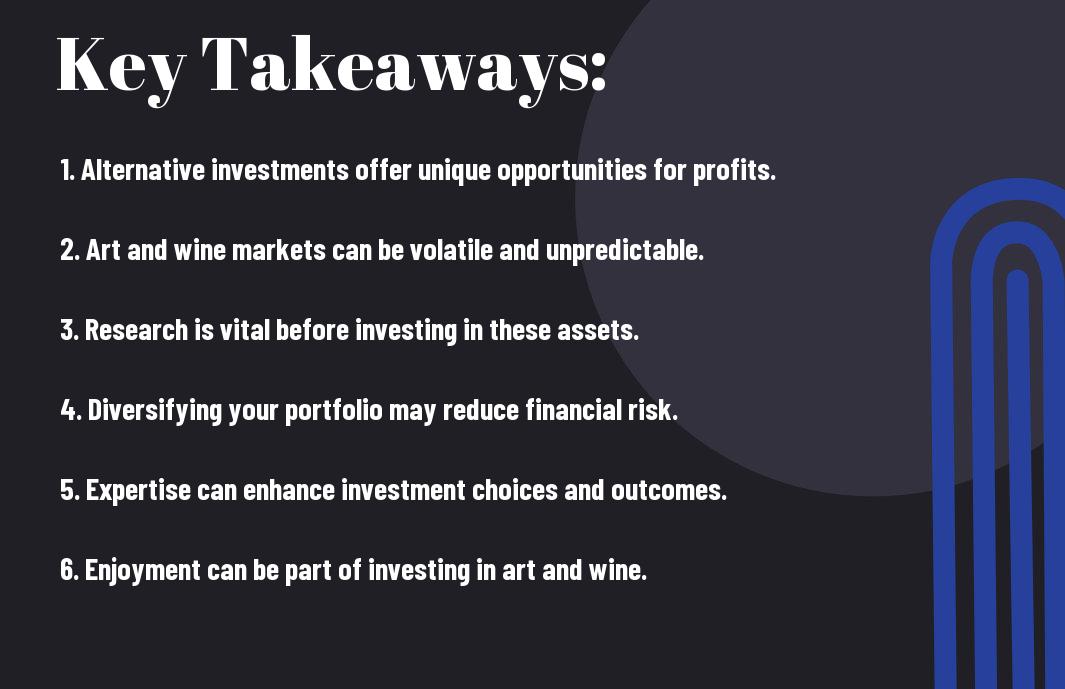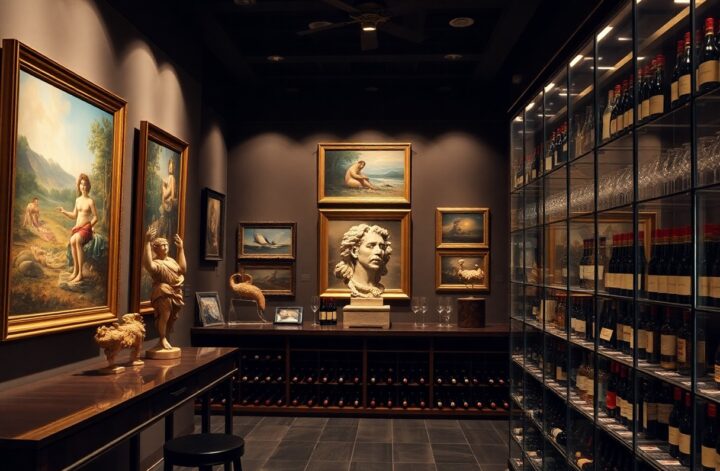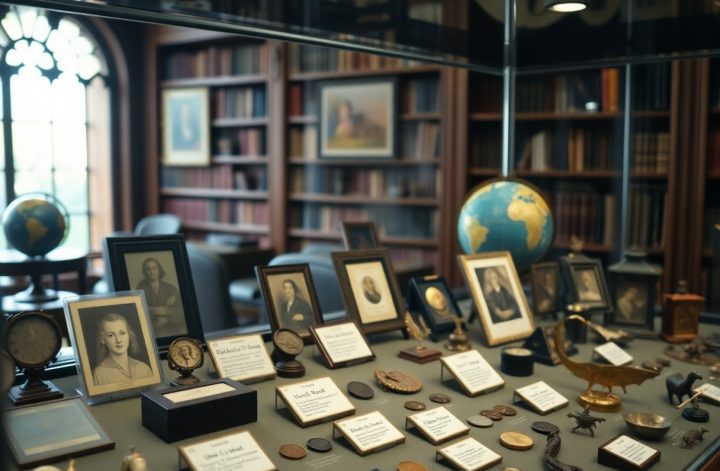Most people think of stocks and bonds when it comes to investing, but alternative investments, like art and wine, have gained popularity. These unique assets can offer exciting opportunities and potential profits. However, they also come with their own set of risks. In this blog post, you will learn about the benefits of investing in art and wine, as well as the challenges you need to consider before diving in. Let’s explore this fascinating world together!
Key Takeaways:
- Alternative investments like art and wine can offer high returns, but they also come with risks, including market volatility and liquidity challenges.
- Research is crucial. Understanding the art or wine markets will help you make informed decisions and spot potential opportunities.
- Diversification is key. Investing in multiple types of alternative assets can spread risk and potentially enhance overall investment performance.

What Are Alternative Investments?
A variety of investments exist beyond the traditional stocks and bonds. These are known as Alternative Investments Explained: What Are They, And How …. They can offer unique benefits but also come with different risks. Understanding them can help you diversify your portfolio.
Definition and Overview
Overview: Alternative investments refer to assets that do not fall into the standard categories like stocks or bonds. This can include a range of options like art, wine, real estate, and more. Investors often seek these types of investments for their potential to provide returns that are less correlated with traditional markets.
Types of Alternative Investments
To understand alternative investments better, here are some common types:
| Type | Description |
|---|---|
| Art | Investing in paintings and sculptures. |
| Wine | Purchasing fine wines for resale. |
| Real Estate | Buying property for rental income. |
| Commodities | Investing in resources like gold and oil. |
| Cryptocurrencies | Digital currencies like Bitcoin. |
You may find alternative investments appealing for their potential high returns. However, they also carry unique risks. This can include greater volatility, lower liquidity, and sometimes less information available for decision-making.
- Investing in art requires knowledge about the market.
- Wine investment depends on storage and proper aging conditions.
- Real estate needs property management skills.
- Commodities can be affected by global events.
- Cryptocurrencies face regulatory challenges.
The key to successful alternative investing is to do your research and understand the underlying factors affecting these assets.
In-Depth Look at Alternative Investments
Due to their unique characteristics, alternative investments appeal to many investors. They can provide an opportunity to diversify your holdings.
| Factor | Impact |
|---|---|
| Risk | Higher than traditional investments. |
| Liquidity | Less liquid than stocks and bonds. |
| Management | May require hands-on involvement. |
| Market Knowledge | Essential for success. |
| Return Potential | Often higher than average. |
- Alternative investments can span many areas, diversifying your portfolio.
- They may provide unique tax advantages.
- You often need less correlation with stock markets.
- Special expertise can lead to better investment choices.
- Understanding market trends is critical for success.
Exploring alternative investments can open new opportunities for you, but be sure to consider the risks involved.

The Appeal of Investing in Art
Some people are drawn to investing in art because it offers a unique blend of financial potential and personal enjoyment. Unlike stock market investments, art can provide aesthetic pleasure while also appreciating in value. As you build your collection, the artwork can become a centerpiece in your home, showcasing your taste and personality. Plus, art can serve as a conversation starter, allowing you to connect with others who share your interests. With the right pieces, you may find yourself not only invested financially but emotionally as well.
Historical Performance
Between 2000 and 2021, art investments have shown a remarkable return, often exceeding traditional investments like stocks and bonds. The Art Market Research reported that the value of art grew about 10% per year on average during this period. This impressive historical performance draws many investors, encouraging you to consider art as a viable addition to your portfolio. Understanding how past trends may influence future performance can help you make informed decisions.
Emotional and Aesthetic Value
Beside the potential financial returns, investing in art also brings emotional and aesthetic satisfaction. When you invest in a piece that resonates with you, it can enhance your living space and elevate your emotional well-being. The connection you feel to the artwork contributes to its value, making it a personal treasure rather than just a financial asset.
With art, you have the opportunity to support creativity and culture. Each piece tells a story, evoking feelings and memories that can enrich your life. You may find that the artwork you choose brings inspiration to your daily routine. Additionally, collecting art can connect you with artists and art communities, offering new experiences and insights. So, as you think about adding art to your investment portfolio, consider not only the potential for profit but also the joy and fulfillment it can bring to your life.

The Allure of Wine Investments
After considering various investment options, wine emerges as a captivating choice. Many investors find the world of fine wine fascinating because it blends passion with potential profit. With the right knowledge, wine can offer both enjoyment and financial growth. You might think of it as investing in a piece of culture and history, where every bottle tells a story and can appreciate over time.
Market Trends
Below, we discuss the current market trends in wine investments. The popularity of wine investing has grown significantly over the years. Many investors now view it as a smart alternative to traditional assets. You will notice that fine wines often command higher prices, especially during certain seasons and economic conditions. As more people appreciate wine, the demand rises, pushing prices higher.
Factors Influencing Wine Prices
Allure comes from various factors that influence wine prices. Some key elements include:
- Brand reputation and winery history
- Vintage quality and rarity
- Market demand and consumer interest
Assume that these factors play a significant role in determining how much a wine bottle can cost. The combination of these elements can lead to impressive returns on your investment.
Trends show that the wine market is also influenced by consumer preferences and global events. As tastes change, so do the values on different wine types. Here’s what to consider:
- Changing consumer tastes (for example, a shift from red to white wines)
- The prominence of specific wine regions
- Global economic conditions affecting luxury purchases
Assume that staying informed about these trends can help you make better decisions when investing in wine.
Risks Associated with Art Investments
Your journey into art investments may sound exciting, but it comes with risks. The art market can be unpredictable, and prices can fluctuate. Additionally, understanding the value of pieces and their potential appreciation requires experience. For detailed guidance, consider Considering Alternative Investments for Your Portfolio. Make sure you conduct thorough research before diving in.
Market Volatility
Before investing in art, it’s vital to be aware of market volatility. Art prices can change based on trends, artist popularity, and economic conditions. This means what you pay today may not reflect its value tomorrow. Awareness of these factors will help you make better investment decisions.
Authenticity and Provenance Issues
Market challenges can arise from authenticity and provenance issues. Many buyers invest in art without knowing the true background of the pieces. Knowing where the artwork comes from and its verification is vital. Without this information, the value of your investment can decrease significantly.
Consequently, ensuring proper documentation and verification is key. Many investors have faced losses due to counterfeit artworks or unclear ownership histories. It is smart to seek professional opinions and authenticate pieces before purchase. This extra step protects your investment and boosts your confidence while navigating the art market.

Risks of Investing in Wine
All investments come with risks, and investing in wine is no different. You face issues like storage costs, fluctuations in market demand, and the potential for counterfeit products. Plus, the value of your wine can vary greatly with changing trends in the market. Ensuring that your investment pays off requires careful research and attention to these risks.
Storage and Handling
The way you store and handle your wine can greatly impact its value. Proper conditions are vital, as wine needs a stable environment with controlled temperature, humidity, and light. Neglecting these factors can lead to spoilage. If you’re serious about your investment, you may need to consider professional storage services, which can add to your overall costs.
Market Demand and Trends
Handling the market demand and trends requires you to stay informed about consumer preferences and changing tastes. The wine market can be quite volatile, with certain types of wine gaining or losing popularity quickly. This unpredictability means that your investment could be worth much less than you originally paid if demand shifts suddenly.
Another important factor to consider is how new generations of wine drinkers are influencing the market. For instance, younger consumers often prefer natural and organic wines, pushing traditional wines to the background. Keeping an eye on these trends can help you make wiser investment choices and increase the potential return on your wine assets.
Strategies for Successful Alternative Investments
Unlike traditional investments like stocks and bonds, alternative investments in art and wine require a different approach. You need to focus on a few key strategies to enhance your chances of success. Start by thoroughly researching your investment options. This involves understanding the market trends and the specific factors that influence the value of art and wine. Connecting with experts and other investors can also provide valuable insights.
Research and Education
One of the most important steps in alternative investments is education. You should seek out information about the specific art pieces or wines you are considering. Attend workshops, read books, and follow industry news to build your knowledge. The more you learn, the better your investment decisions will be.
Diversification and Risk Management
Below, it’s important to diversify your investments in art and wine to manage risk effectively. This means not putting all your money into one type of asset or category. Spreading your investments across different pieces or wine regions can protect you from losses if one investment doesn’t perform well.
But even with diversification, you must be aware of the risks involved. Art and wine markets can be unpredictable, and values may fluctuate. By diversifying, you lower the chance of losing too much money at once. Always assess the market trends and adjust your portfolio accordingly. Keeping a balanced mix of investments can lead to more stable returns in the long run.
To Wrap Up
Upon reflecting on the risks and rewards of alternative investments in art and wine, you can see that these opportunities offer unique potential for growth. By diversifying your portfolio with these tangible assets, you may be able to enjoy financial benefits while indulging in your passion for creativity and culture. However, it’s vital to approach these investments with care and adequate knowledge to mitigate risks. Keep learning and stay informed to make the best choices for your investment journey.
FAQ: Understanding the Risks and Rewards of Alternative Investments in Art and Wine
Q1: What are alternative investments in art and wine?
A: Alternative investments refer to assets that aren’t traditional stocks or bonds. In this case, art and wine are considered alternative investments. Investing in art involves purchasing paintings or sculptures, while investing in wine means buying bottles that can appreciate over time. These investments can offer unique opportunities for growth and enjoyment.
Q2: What are the main risks associated with investing in art?
A: Investing in art comes with several risks. These include:
- Market Volatility: The value of art can change based on trends and demand.
- Authenticity Issues: There may be fraud or misattributed works, leading to potential losses.
- Storage and Maintenance Costs: Proper care for art can be expensive.
It’s important to do thorough research to minimize these risks.
Q3: How do I evaluate the potential reward of wine investments?
A: To evaluate wine investments, consider the following factors:
- Brand Reputation: Well-known wineries tend to have more stable prices.
- Vintage Year: Certain years are better for wine quality, affecting future value.
- Storage Conditions: Proper storage can enhance a wine’s quality and value over time.
The right choice can lead to profitable returns if done carefully.
Q4: Can I invest in art and wine as a beginner?
A: Yes, beginners can invest in art and wine. Start by educating yourself about the market and trends. Consider starting small, like buying prints or bottles from affordable vineyards. It’s also helpful to attend art shows and wine tastings to gain insight and make connections in the industry. Networking can lead to valuable advice and opportunities.
Q5: How do I ensure trustworthiness in my investments?
A: To ensure trustworthiness in your investments, follow these tips:
- Research Provenance: Check the history and ownership of the art or wine.
- Buy from Reputable Dealers: Purchase from known galleries or trusted wine merchants.
- Get Professional Appraisals: Have experts evaluate your potential purchases.
Being diligent helps protect your investment and provides peace of mind.
Key Takeaways
Investing in art and wine can be rewarding, but it’s important to understand the risks. Start with research, consider beginning with affordable options, and always verify the trustworthiness of your purchases. With careful planning and informed decisions, you can enjoy both the financial and aesthetic benefits of these unique investments.




